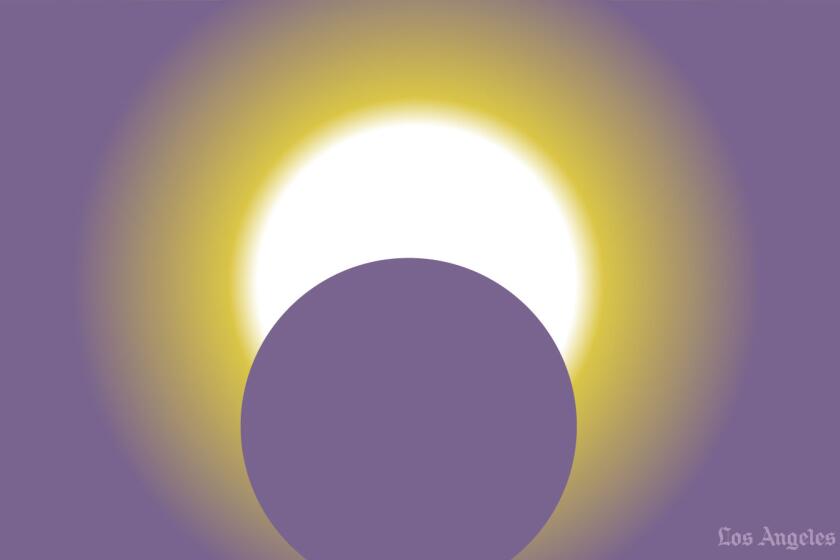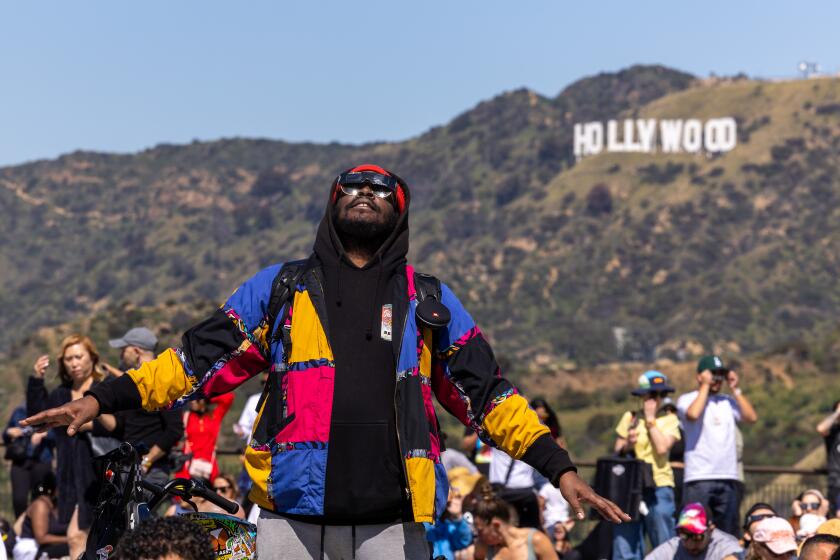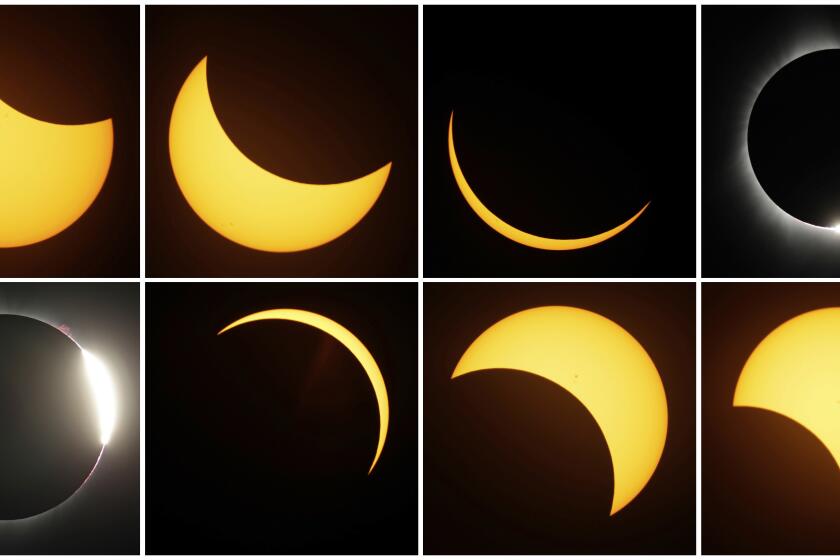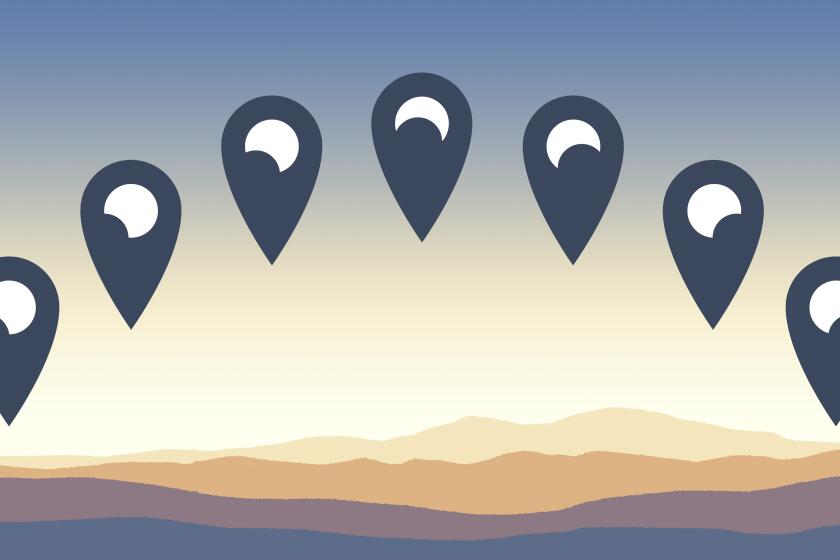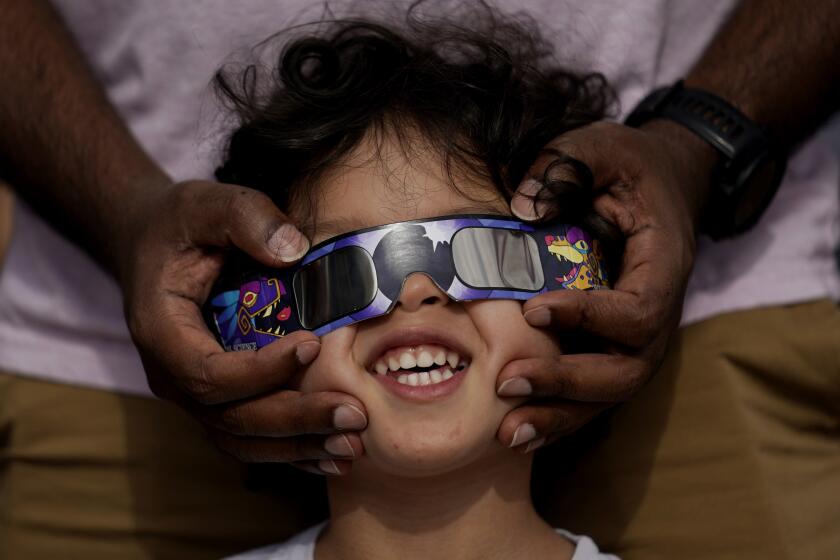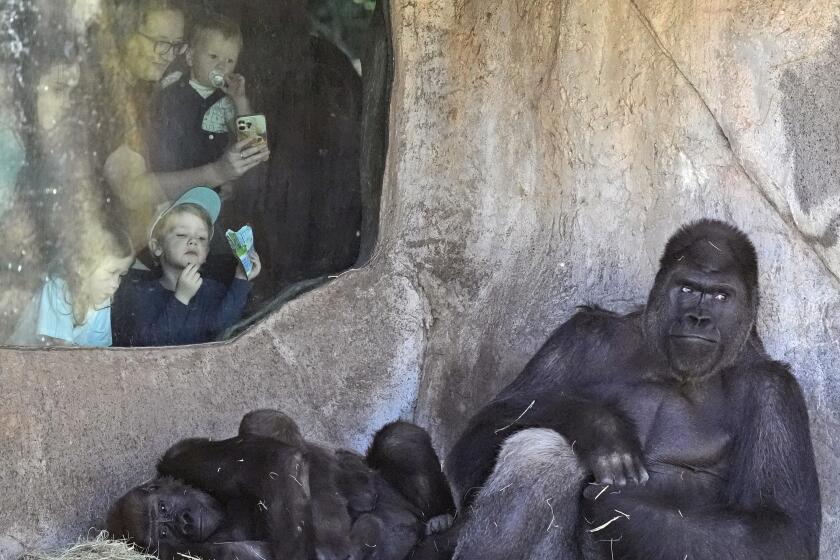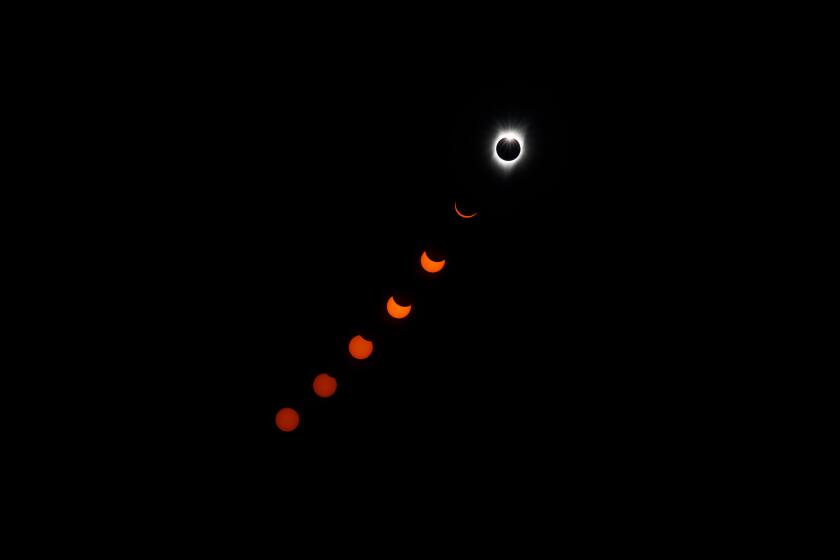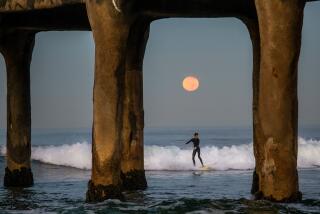Your last-minute guide to enjoying the solar eclipse — in L.A. and beyond
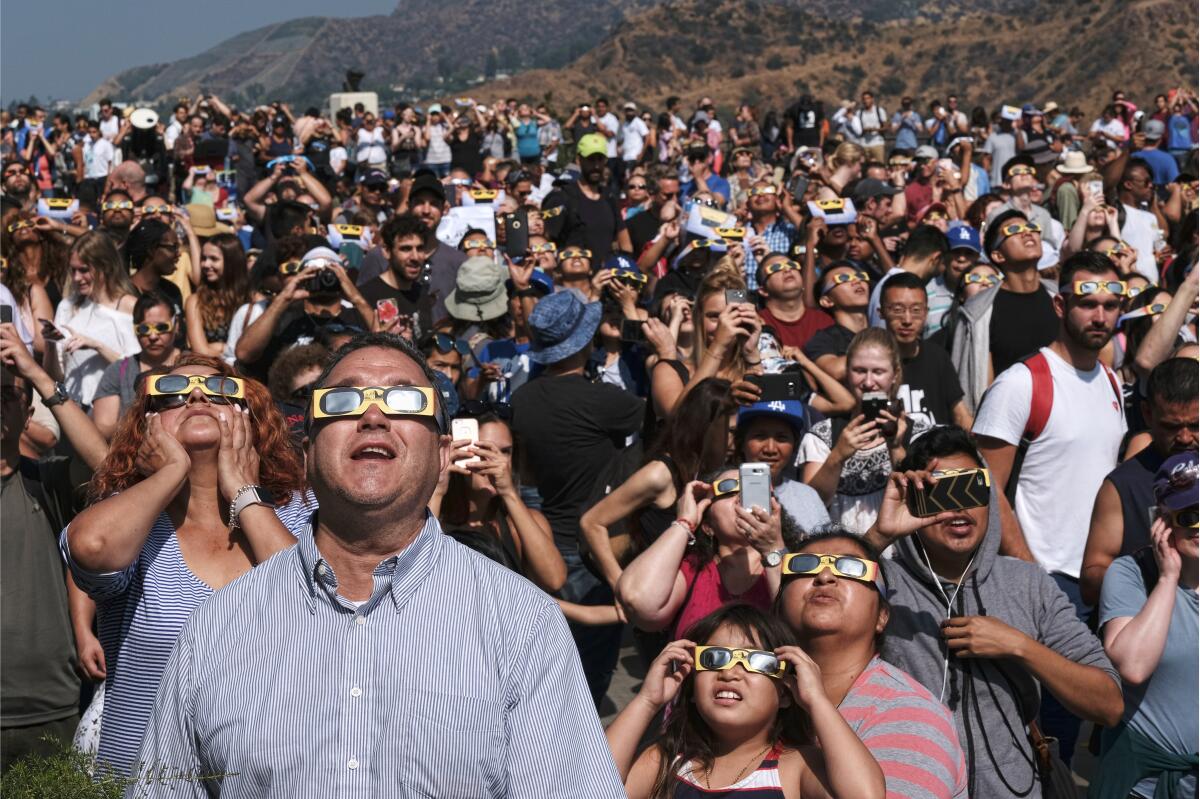
- Share via
It’s finally here: the great eclipse of 2024.
The last total solar eclipse that crossed the contiguous United States was in August 2017, according to NASA. Another one won’t cross again for 20 years.
Throngs of people are traveling to the Midwest and east, where the eclipse action will be the most dramatic.
And although California won’t experience the phenomenon of totality, there is still plenty to see.
Here is a quick guide:
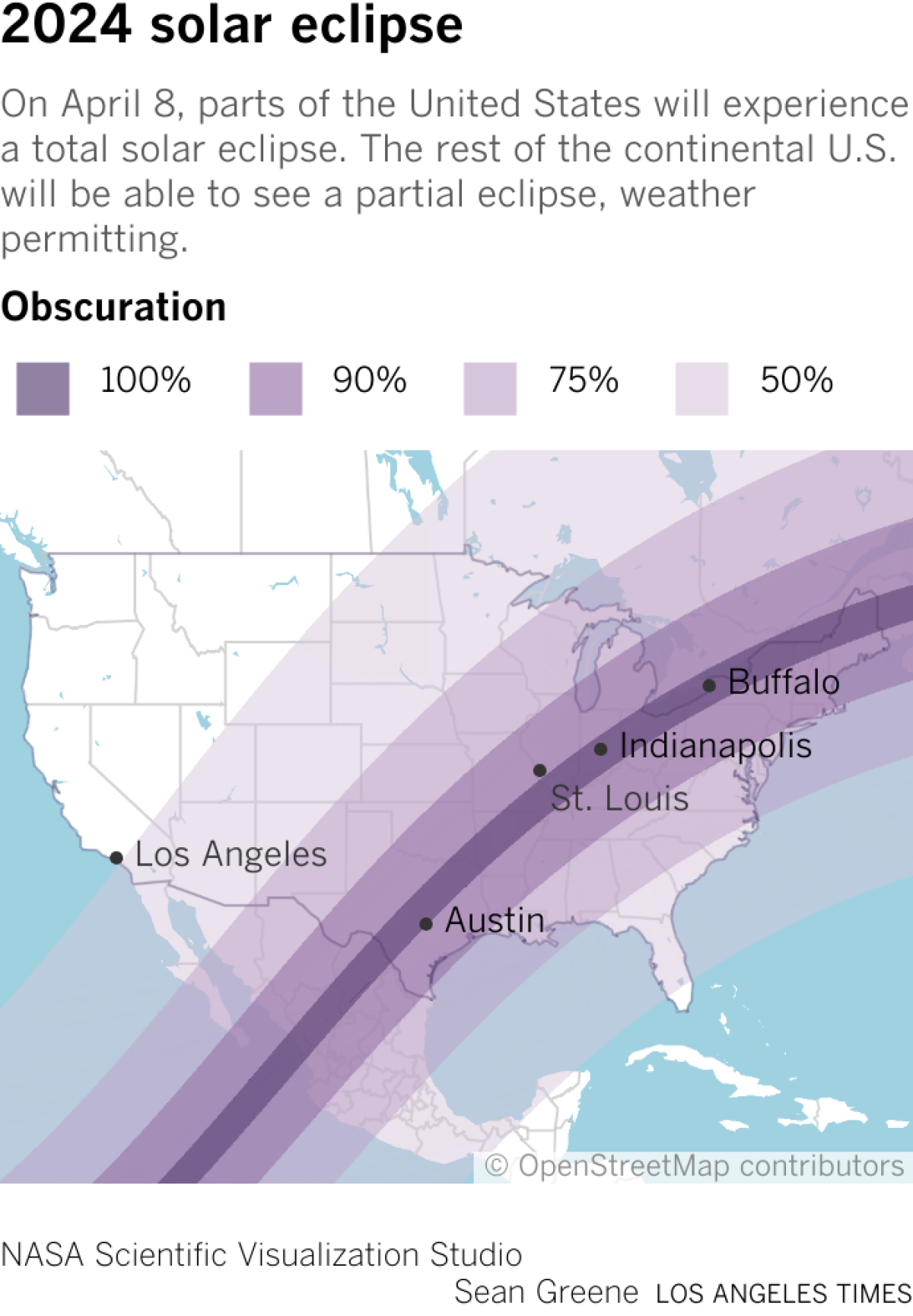
What is a total solar eclipse?
- Total eclipse: Midday darkness will be cast on a sliver of states, including Texas, Illinois, Ohio and New York — but there won’t be any “totality” in Los Angeles.
- Partial eclipse: In Los Angeles, about half of the sun will be visibly covered by the moon, and in San Francisco, one-third will be. The northernmost parts of the state will see the smallest amount of the eclipse, while cities to the south will experience more.
Though there won’t be totality in California, the state will still enjoy an impressive partial eclipse in the late morning — if the skies remain cloud-free.
Millions of people across the U.S. will look up at the sky to witness a rare total solar eclipse. California won’t experience totality, but there’s still plenty to see.
Why would someone journey across the country to watch a total eclipse? Because it’s more than just an astronomical rarity: It may be the best show in the universe.
What time is the eclipse?
In Los Angeles, a substantial blocking of the sun will be obvious by 10:39 a.m. and will peak at 11:12 a.m. By 12:22 p.m., it will be over, according to the Griffith Observatory.
There will be a lot of events locally.
Whether you’re a science nerd hoping to pick the brains of professional astronomers or a parent looking to teach their child about space, these six events will elevate your eclipse-viewing experience.
How to see the eclipse
- Looking up: The first rule of a solar eclipse is, don’t look at the sun without specialized eclipse glasses or a solar viewer. It’s not safe. If you look up at the eclipse without protection, it will cause severe eye injury, according to NASA.
- Using the right glasses: Here are some safety and glasses tips. When you do get a pair of glasses or viewers, make sure they’re in good condition. If the viewers are torn, scratched or punctured, discard them. If the filters are coming loose from their cardboard or plastic frames, discard them.
- Taking pictures: Even taking photos on your phone can pose risks to your eyes. Casually including the sun in a photo for a quick snapshot isn’t really a safety issue for the camera. But experts have tips.
Looking for a place to watch the solar eclipse on April 8? Events are happening around Los Angeles County. Here where to catch a glimpse, how to watch safety and where to get free solar eclipse glasses.
Here are some tips for taking photos of Monday’s upcoming solar eclipse without ruining your smartphone.
And finally ...
Enjoy the day! Rare moments can bring people together. At least some scientists think so.
Of course they can also spark end-times conspiracies (please, ignore those!).
At least it will be clear in Southern California. Elsewhere, cloudy skies risk spoiling the view for eclipse chasers. There are only expected to be a few small clouds in the Los Angeles area near the eastern San Gabriel Mountains, but even hikers on those peaks will still be able to catch the eclipse, according to National Weather Service meteorologist Kristan Lund.
Researchers and citizen scientists will observe how animals’ routines at several zoos are disrupted during the April 8 total solar eclipse.
Awe is a serious topic among psychologists, including one at UC Irvine investigating whether awe-inspiring solar eclipses can help unite Americans.
California only gets a partial eclipse. But that’s no reason to miss it. The next one is years away.
More to Read
Sign up for Essential California
The most important California stories and recommendations in your inbox every morning.
You may occasionally receive promotional content from the Los Angeles Times.
